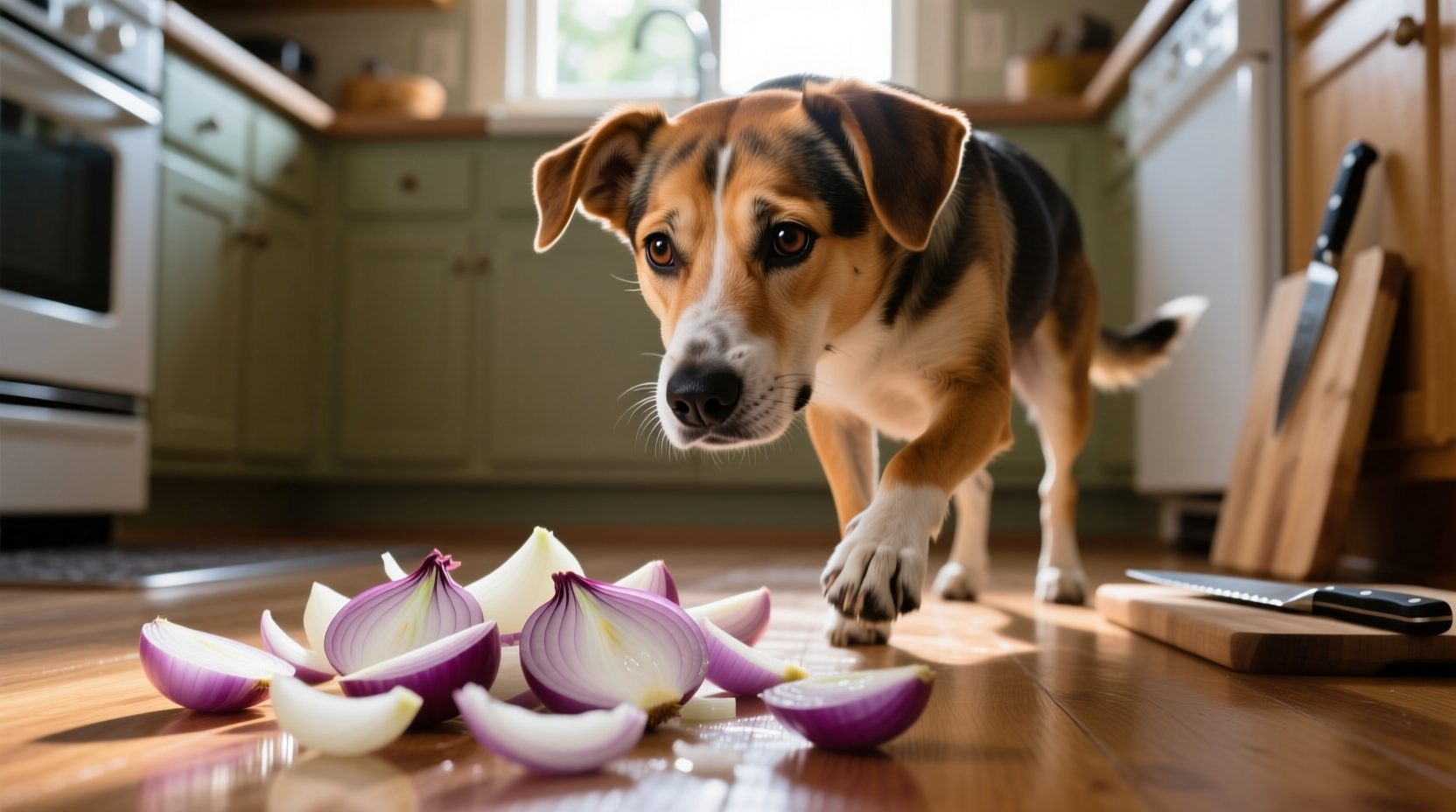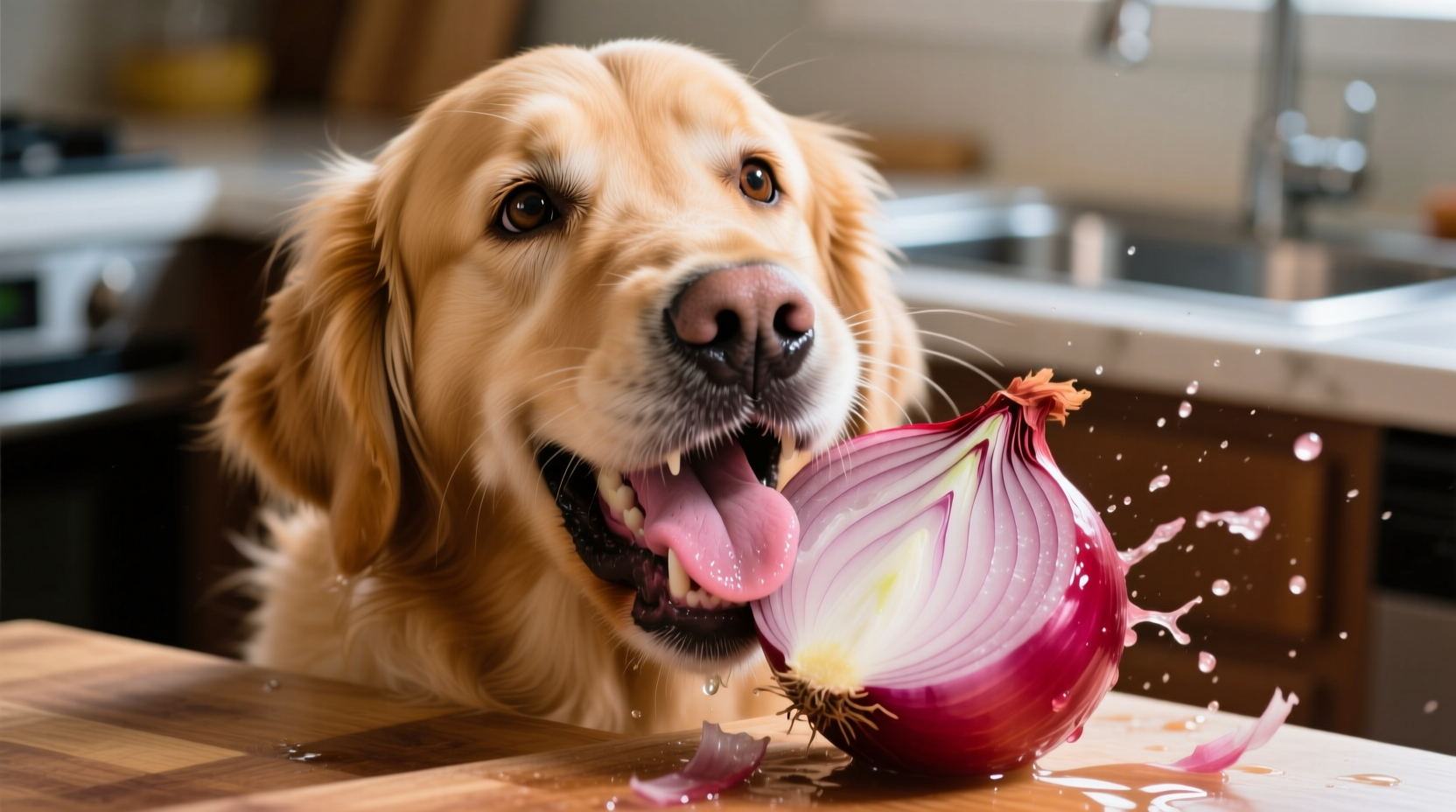Discovering your dog consumed onion triggers immediate concern—and rightly so. This common kitchen ingredient poses serious health risks to canines that many pet owners don't recognize until it's too late. Understanding the precise dangers, recognizing early symptoms, and knowing exactly what steps to take within the critical first hours can mean the difference between a minor scare and a veterinary emergency.
Immediate Action Plan: First 60 Minutes After Ingestion
Time is critical when your dog eats onion. Follow this vet-approved sequence:
- Document everything: Note the time, estimated amount consumed, and whether it was raw, cooked, or powdered (powder is most concentrated)
- Contact your veterinarian immediately—don't wait for symptoms to appear
- Have your dog's weight ready to help calculate potential toxicity levels
- Do NOT induce vomiting unless specifically instructed by a veterinary professional
- Preserve a sample of what your dog ate for identification
"Many owners mistakenly think cooked onions are safe," explains Dr. Karen Becker, certified veterinary specialist. "The cooking process doesn't neutralize the toxic compounds—onion powder in baby food has caused severe poisoning cases."
| Dog Weight | Danger Threshold | Severe Risk Level |
|---|---|---|
| 10 lbs (4.5 kg) | 2-4 oz (60-120g) | 4+ oz (120g+) |
| 30 lbs (13.6 kg) | 6-12 oz (180-360g) | 12+ oz (360g+) |
| 70 lbs (31.8 kg) | 14-28 oz (420-840g) | 28+ oz (840g+) |
Why Onions Are Dangerous: The Science Behind the Toxicity
Onions contain N-propyl disulfide, a compound that oxidizes hemoglobin in red blood cells. This creates Heinz bodies—abnormal structures that make red blood cells fragile and prone to rupture. The resulting hemolytic anemia reduces oxygen delivery throughout your dog's body.
The American Veterinary Medical Association confirms that all members of the Allium family (onions, garlic, leeks, chives) pose risks, with onions being particularly dangerous due to their common household presence. Unlike humans, dogs lack the enzyme system to efficiently process these compounds.

Symptom Timeline: What to Watch For in the Next 5 Days
Onion poisoning symptoms often appear delayed, creating false reassurance. Monitor closely using this veterinary-validated timeline:
- 0-24 hours: Possible vomiting, diarrhea, abdominal pain (not always present)
- 24-72 hours: Lethargy, decreased appetite, rapid breathing
- 3-5 days: Pale gums, dark urine (hemoglobinuria), weakness, collapse
The ASPCA Animal Poison Control Center reports that 68% of onion toxicity cases show symptoms between 72-120 hours post-ingestion. Early intervention before symptom onset significantly improves outcomes.
Veterinary Treatment Protocols: What to Expect
When you reach the vet, they'll likely follow these evidence-based protocols:
- Decontamination: Activated charcoal administration if ingestion was recent
- Diagnostic testing: Complete blood count, serum chemistry, urinalysis
- Supportive care: IV fluids, oxygen therapy, anti-nausea medication
- Severe cases: Blood transfusion for critical anemia
According to Veterinary Information Network data, dogs treated within 4 hours of ingestion have a 92% recovery rate without complications, compared to 67% when treatment begins after symptoms appear.
Prevention Strategies: Keeping Your Kitchen Safe
Prevent future incidents with these practical measures:
- Store onions and garlic in closed cabinets—not on counters
- Dispose of onion scraps immediately in secured outdoor bins
- Check baby food labels—some contain onion powder
- Train dogs the "leave it" command for dropped food
- Inform all household members about this hidden danger
Remember that processed foods often contain hidden onion derivatives. Broth-based soups, gravies, and many commercial baby foods list onion powder as an ingredient—making them unexpectedly dangerous if shared with pets.
Common Misconceptions About Onion Toxicity
Several dangerous myths persist among pet owners:
- Myth: "Cooked onions are safe"
Fact: Cooking doesn't destroy N-propyl disulfide—the toxic compound remains active - Myth: "Only large amounts are dangerous"
Fact: Small repeated exposures (like daily table scraps) can cause cumulative toxicity - Myth: "Garlic is more dangerous than onions"
Fact: Onions contain higher concentrations of the toxic compounds per gram
When to Call Emergency Services vs. Your Regular Vet
Not all onion exposures require emergency care, but knowing the difference matters:
- Contact emergency vet immediately if: Your dog consumed more than 0.5% of their body weight in onions, shows any symptoms, or has pre-existing health conditions
- Call regular vet during business hours if: Ingestion was minimal (less than 0.2% body weight) with no symptoms, and your dog is otherwise healthy
The Pet Poison Helpline reports that 41% of onion-related calls involve "just a small taste" scenarios where owners delayed treatment—only to have symptoms develop days later. When in doubt, always err on the side of caution.











 浙公网安备
33010002000092号
浙公网安备
33010002000092号 浙B2-20120091-4
浙B2-20120091-4